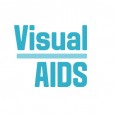
Screenshot from ICA Day With(out) Art web page
AIDS can be isolating, and yet we have a rich history of people coming together to care, to demand change, to heal, and to create. As the Programs Manager at Visual AIDS I get to see it first hand when I think about our history, and get to work with artists, activists and advocates to help shape the future.
Visual AIDS was founded in 1988 when a small group of writers, art historians, and people from the art world banded together to ensure art institutions were part of the response to HIV/AIDS. Day Without Art was born. In the first year over 800 organizations either closed their doors or covered up an artwork on December 1st to illustrate the loss of life within the art world due to HIV. Employees were encouraged to volunteer their time on December 1st with people living with HIV.
Nearly a decade later, after the introduction of ART (Antiretroviral Treatment) helped many live longer lives with HIV, the name changed to Day With(out) Art. Instead of closing doors, and covering up art work, art organizations were encouraged to work with artists living with HIV to create new work and programming to raise awareness around HIV, and show the vibrant lives that some artists living with HIV could have. As the reality of some people living with HIV changed, so to did the response.
Now, as public awareness of HIV has entered into a third decade, Day With(out) Art has become a way in which we can look both backwards, forwards, and what is happening currently. For Day With(out) Art 2012, Visual AIDS was proud to distribute United in Anger: A History of ACT UP by filmmaker Jim Hubbard. We helped screen it at over 30 locations around the world. As part of the screening, public conversations about the ongoing epidemic occurred. And in some cases a whole day of programming was created.
A wonderful example of what can happen on Day With(out) Art came from the Institute of Contemporary Art in Philadelphia where Visual AIDS’ former Executive Director Amy Sadao is now the Daniel Dietrich II Director of the ICA. They screened United in Anger and Che Gossett’s KIYOSHI KUROMIYA: A Queer Left and AIDS Activist Inspiration, hosted a ribbon bee, and had a roundtable discussion with artists Joy Episalla and Carrie Yamaoka.
To keep the conversation going after December 1, they created a user generated tumblr that catalogs red ribbon imagery, and a web page from which you can download a zine of AIDS related readings, and watch a video they produced from their day of programming.
The work of ICA and the many partners that Visual AIDS had the opportunity to work with on December 1st, show us is that there is a vital community of people committed to ending the harm of the epidemic. AIDS is not over. And while it is a damn shame that suffering continues, our hearts are buoyed by the ongoing commitment of people living with HIV, activists and artists. Together we heal.
Ted Kerr, Programs Manager
Visual AIDS








Comments
Comments